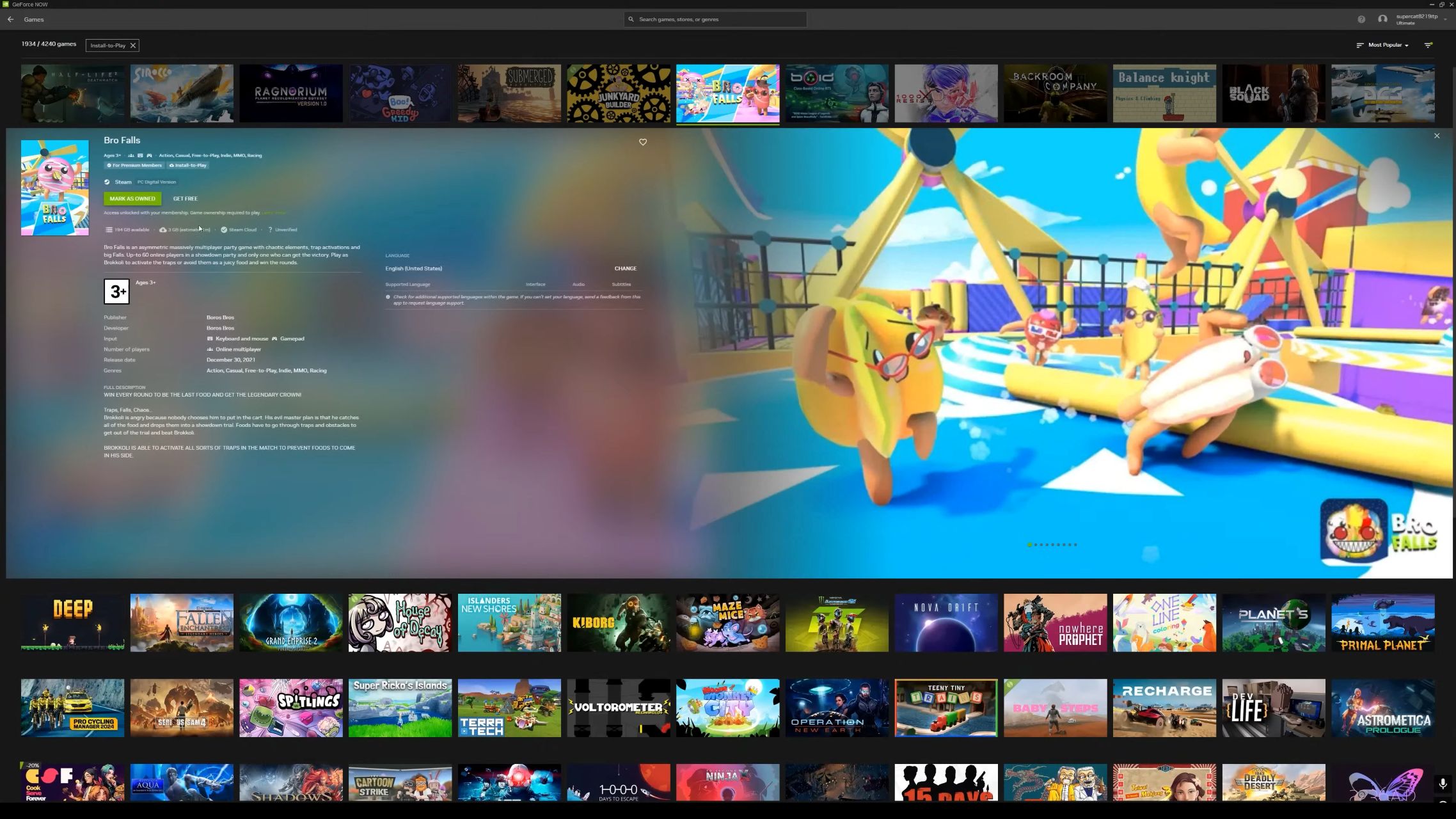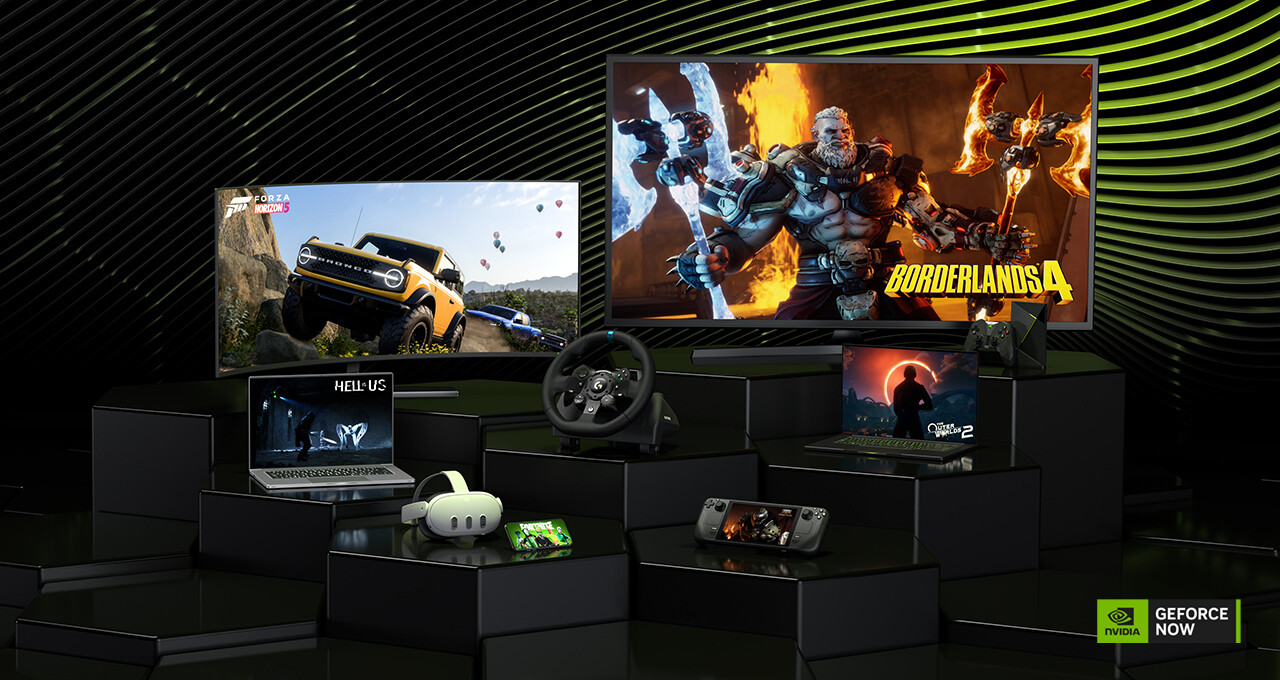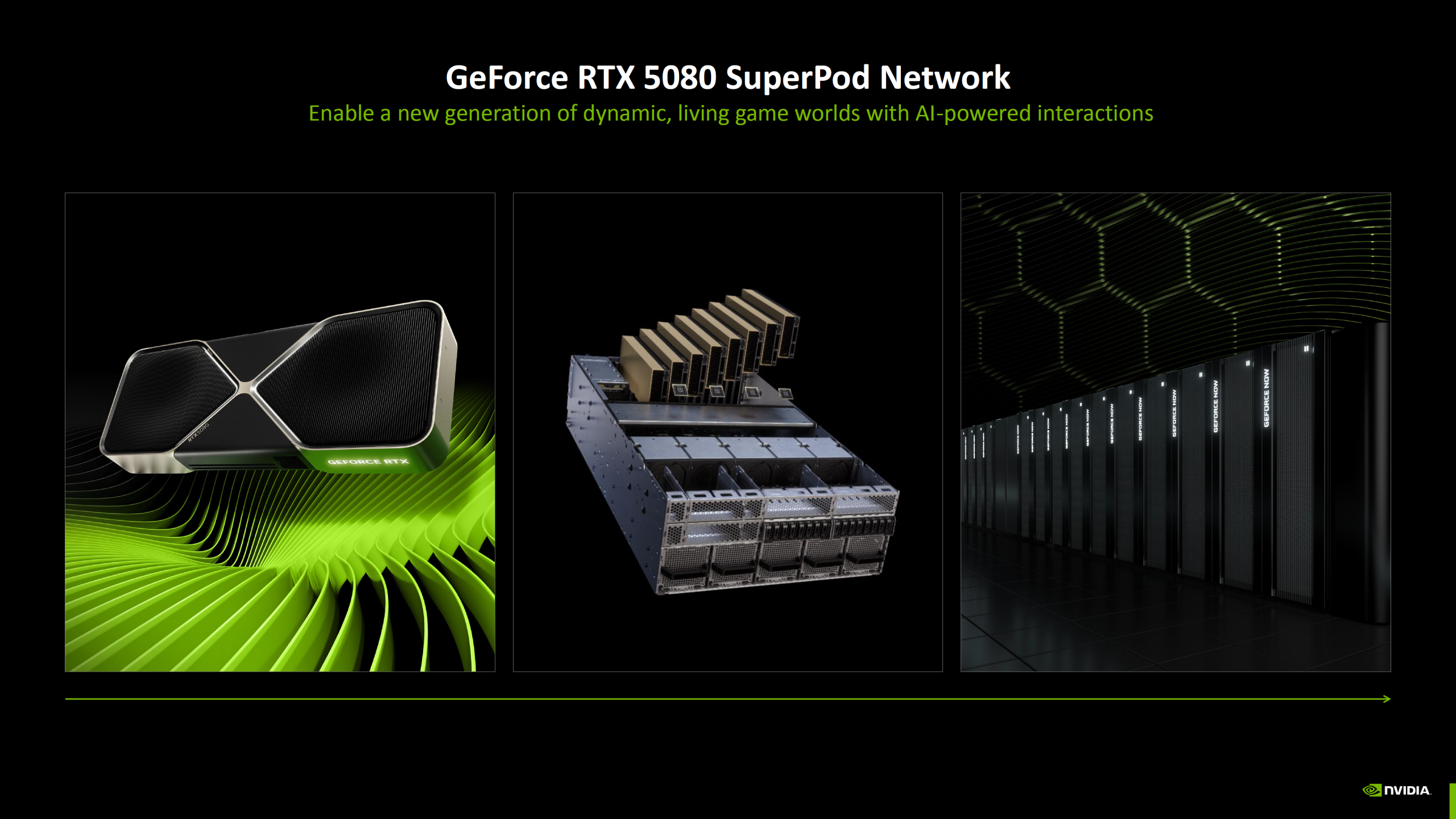When Nvidia announced the RTX-5080 “Blackwell” upgrade for GeForce Now, I was curious but skeptical. Cloud gaming has been full of big promises for years, yet every time I tried it, something cracked. Input lag. Blurry compression. Games looking fine in screenshots but feeling hollow in motion. I wanted to believe, but I’d stopped expecting miracles.
Then I booted up Indiana Jones and the Great Circle on my MacBook Air and it just… worked. Smooth, stable, just like on my powerful Xbox Series X. That was the moment it clicked: this update isn’t just faster servers. It feels like Nvidia finally rebuilt GeForce Now to actually be a gaming platform, not just a streaming trick and it shows.
A clean start on familiar hardware
Setting it up on my iMac and MacBook Air was refreshingly unremarkable. The new GeForce Now client recognized both Steam and Xbox instantly; I logged in, and my libraries appeared without any sync gymnastics. Even cross-save data carried over neatly. It sounds small, but not having to fight a launcher jungle before even playing felt like a quiet revolution.
On macOS, where gaming has always been an afterthought, that kind of frictionless onboarding matters. This was the first time I opened my MacBook and felt like it was ready to be a gaming machine which is a huge upgrade from where I would use my MacBook for in the past. The last couple of weeks it became my powerful gaming PC where I could enjoy all the big and small screens without any issues. Keep in mind that I mostly played at home because the service does demand a stable and strong internet connection, without that, you won’t be able to use it to its full capabilities. That being said, there’s more to it than just prettier graphics.
Install-to-play
The biggest shift comes from Nvidia’s new Install-to-Play system. Before, GeForce Now always streamed games from a cold state: every time you launched something heavy, you were waiting on remote machines to spin it up from scratch. Now, Ultimate tier users can pre-install games to their reserved cloud rig.
It’s subtle, but transformative. Load screens that used to take minutes dropped to seconds. With bigger games this is an incredible feature. Where I had to wait for it to load previously, it boots in mere seconds now since it lives locally on my SSD. Even game updates installed remotely while I was away, so when I came back, everything was ready. It suddenly made cloud gaming feel less like borrowing and more like owning, like I actually had a high-end PC living out there. It might feel like a small upgrade when you read about it but it’s really something else. It feels like Xbox Game Pass but with games that you really can own instead.
Blackwell’s muscle on display
Let’s talk power. The RTX-5080 GPUs inside these Blackwell servers are beasts, and it shows.
On the iMac’s screen, textures were sharp, shadows clean, and particle effects rich without smearing into compression mud. Dynamic lighting,valways the first casualty in cloud streaming,vheld together beautifully. Indiana Jones looked dense, alive, layered with fine detail that older GeForce Now sessions used to smooth out.
Even on the MacBook Air, the difference was obvious. This tiny machine was quietly handling giant cinematic setpieces at stable frame rates, something I could never have imagined a year ago. There’s still a trace of softness around edges when scenes whip by quickly, but compared to older streams, this feels like a new generation entirely. It’s not quite indistinguishable from a native GPU, but it’s closer than I’ve ever seen cloud gaming get.
Nvidia’s improved color sampling and AI scaling quietly make a difference here. Cinematic Mode lets you lean into maximum visual fidelity, and on the iMac’s big display, it looked almost surreal. It’s the first time I didn’t instinctively reach for local hardware to get “real” image quality. Even the GeForce Now interface feels quicker, snappier, less like a thin remote shell.
Input lag and feel
Latency has always been the ghost in the machine for cloud gaming. No matter how pretty the frames, if controls feel loose, it collapses.
Here, Nvidia finally seems to have broken through. Using a wired connection on my iMac, I had moments where I genuinely forgot I was streaming. Movement felt tight. Dodge-rolls landed exactly when I pressed them. Even aiming in action-heavy segments felt natural.
On the MacBook Air over WiFi, I could still sense a faint layer of distance, enough to notice if you’re sensitive, not enough to ruin anything. And crucially, the lag was consistent, not spiking. It felt like playing on a slightly slower local machine, not like fighting molasses. But again in most of my experience the lag was close to none, it’s only when I really focussed on it that I could tell that it was lagging a bit. For slower genres, it’s flawless. For fast action, it’s finally good enough. That’s a first for me on cloud.
Steam, Xbox and the Cloud
Something else surprised me: how cohesive the whole thing feels now. Steam titles installed to the remote rig actually stay there, saving your tweaks and mods. Xbox integration brought my Game Pass library in without drama, and cloud saves synced neatly between platforms.
Even games that don’t support Steam Cloud seemed to preserve progress thanks to Nvidia’s new persistent storage layer. It felt less like “logging into a shared PC” and more like opening my gaming machine, just one that happens to live in a data center.
That psychological shift matters more than it sounds. Cloud gaming has always felt borrowed. This felt like home.
Not quite perfect yet
There are still cracks. Weak WiFi breaks the illusion quickly: compression blur creeps in, motion judders, inputs feel mushy. High-detail modes chew bandwidth fast, so you need a rock-solid connection.
Not all games support Install-to-Play yet either. Steam has the richest integration; Xbox titles work well but don’t always benefit from persistent installs. And while input lag is vastly improved, ultra-competitive players will still sense that faint cloud veil between themselves and the game.
But the difference is that these limits now feel like quirks to work around, not deal-breakers.
Conclusion:
GeForce Now RTX-5080 (Blackwell) isn’t just an upgrade. It’s the first time cloud gaming has genuinely felt viable for me. Running demanding games like Indiana Jones on a MacBook Air, seeing them look and feel this good, changed how I think about what a “gaming machine” even is. Install-to-Play makes GeForce Now behave more like a real PC, and the sheer power of the Blackwell servers pushes visuals closer than ever to local play. It’s not perfect. It’s still the cloud. But it’s the first time the cloud stopped feeling like a compromise. If this is where GeForce Now is headed, I can finally see a future where I don’t need to own a massive GPU tower just to play the games I love. That’s not a marketing slogan. That’s what it actually felt like.





